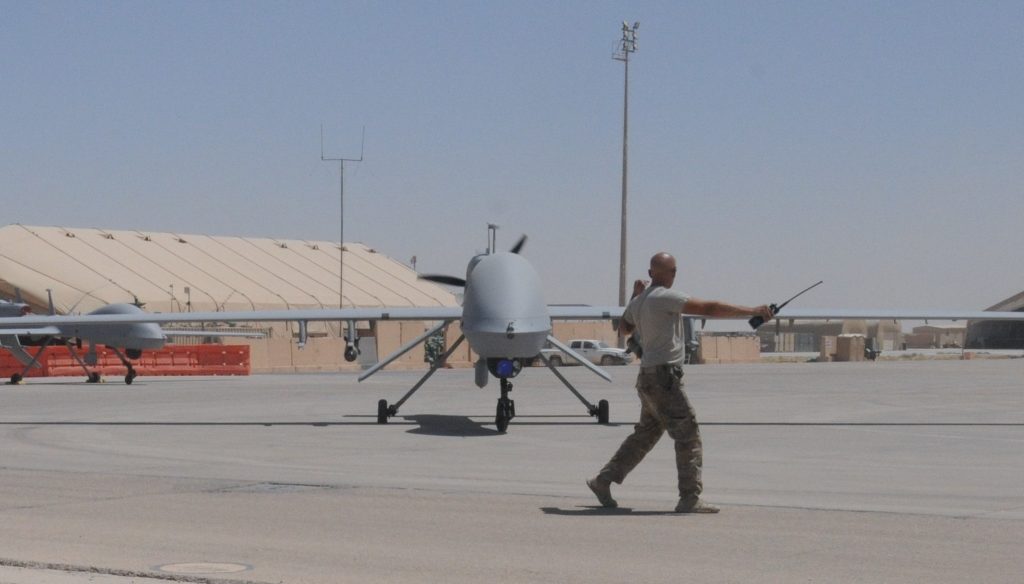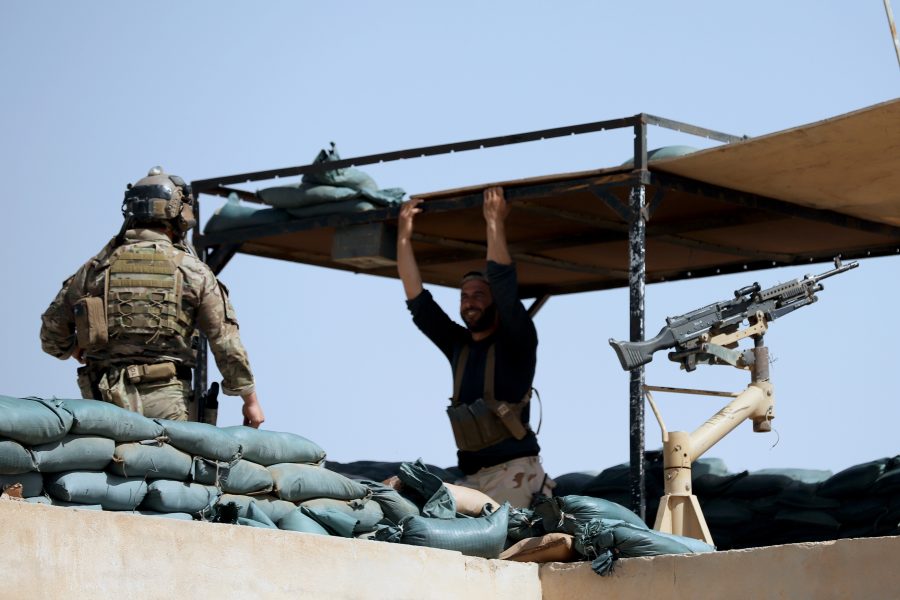U.S. forces continue to come under attack from Iran-backed militias in Iraq and Syria, with “conservative” estimates of at least 40 attacks, mostly with drones and rockets, since Oct. 17. But U.S. leaders are fuzzy on what constitutes an attack on U.S. forces.
“I think part of the challenge here—and I know that you all wrestle with this as well—is defining an attack,” acknowledged Pentagon Press Secretary Air Force Brig. Gen. Patrick S. Ryder at a Nov. 2 press briefing. “It’s going to be an art, not a science, depending on a situation.”
The Pentagon calls its measure “conservative,” meaning it measures only those attacks in which U.S. personnel were “threatened.” The proximity to U.S. forces to an attack is one basic indicator, but it is not clear how close attacks must be to constitute a threat. Most attacks are defeated by air defense systems.
The Pentagon, U.S. Central Command, and Joint Task Force Operation Inherent Resolve, which is charged with helping partner forces in Iraq and Syria fight against ISIS, are all involved in the calculus, according to U.S. officials.
Outside experts and claims by militias suggest the number of attacks may be greater than the Pentagon is acknowledging. The Islamic Resistance of Iraq, an umbrella title for multiple militias, claims it has carried out almost 60 attacks.
“Official claims of responsibility from the Islamic Resistance in Iraq are—in my experience—reliable indicators that an attack was launched,” said Charles Lister of the Middle East Institute.
Lister added that a likely explanation for the lower U.S. government number is due to attacks that land further afield from the U.S. forces.
What is not in dispute is that the threats against U.S. forces grew dramatically in the past month, with some causing injuries and one resulting in the death of a contractor, who suffered a heart attack while sheltering in place. In all, the Pentagon assesses there have now been 46 injuries to U.S. personnel, almost all of which occurred on Oct. 17 and Oct. 18 at Al Asad airbase in Iraq and Al Tanf Garrison in Syria. They suffered a mix of traumatic brain injuries (TBI) and “minor injuries.”
Among the wounded, virtually all quickly returned to duty. Two of those diagnosed with TBI were later transported to Landstuhl Regional Medical Center, Germany, for “further examination and care,” according to Ryder.
Before Hamas’s Oct. 7 attack on Israel and the Israeli military’s forceful response that followed, U.S. forces in Iraq and Syria had been attacked about 80 times by Iranian-aligned militias since the start of the Biden Administration. Not one of those took place in Iraq for at least the past year. Now, however, the militias are making repeated attacks in Iraq and have executed scores of strikes overall.
Some of those have been close calls. The Wall Street Journal reported that one drone landed on top of a barracks in Iraq but failed to explode. At Al Asad, a hanger was destroyed and, with it, a small aircraft inside, according to a U.S. military official.

Air Force F-15E and F-16 jets carried out retaliatory airstrikes on Oct. 26, hitting sites linked to Iran’s Islamic Revolutionary Guard Corps (IRGC). But the Biden administration has not struck back since, noting that little harm has been done to American troops and personnel.
“While we see these attacks increase, we’re not seeing significant casualties or significant harm to our service members,” said Deputy Pentagon Press Secretary Sabrina Singh on Nov. 7.
Complicating the tallying of attacks is the possibility that some attacks may not have been intended for U.S. targets, but rather at the Syrian Democratic Forces (SDF), a U.S. partner in the fight against Islamic State militants, according to an analysis from the Washington Institute for Near East Policy.
Militia estimates may be inflated, as well. Whether the groups are merely trying to harass U.S. forces or are attempting to inflict serious casualties can be a complex undertaking. Michael Knights of the Washington Institute notes that even “performative attacks” can be dangerous because some militias’ rockets are inaccurate and could pose a threat to U.S. forces even if the group intends to miss.
“For me, it’s about intent,” said Knights. “It’s about the fact that they’re risking hitting and killing our troops.”
